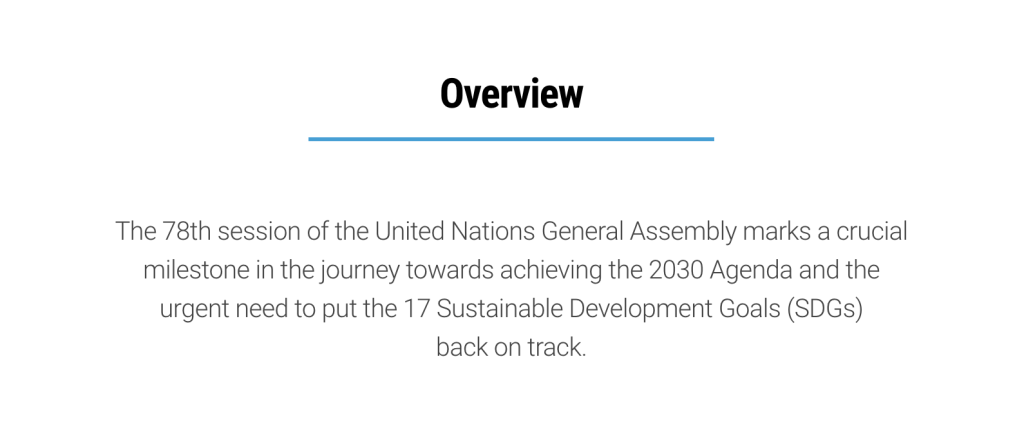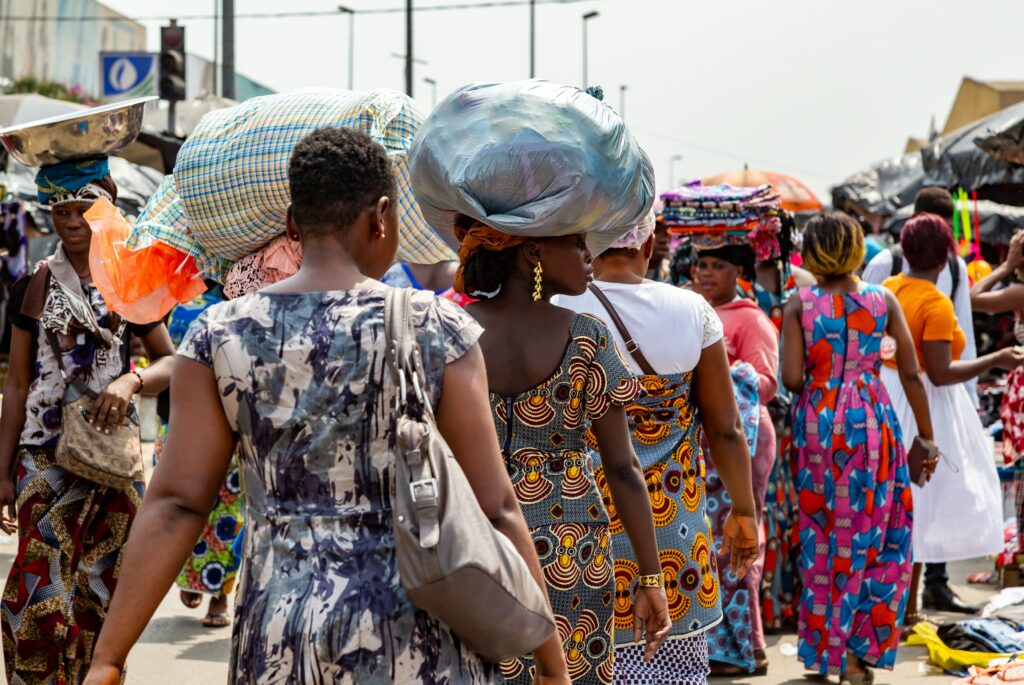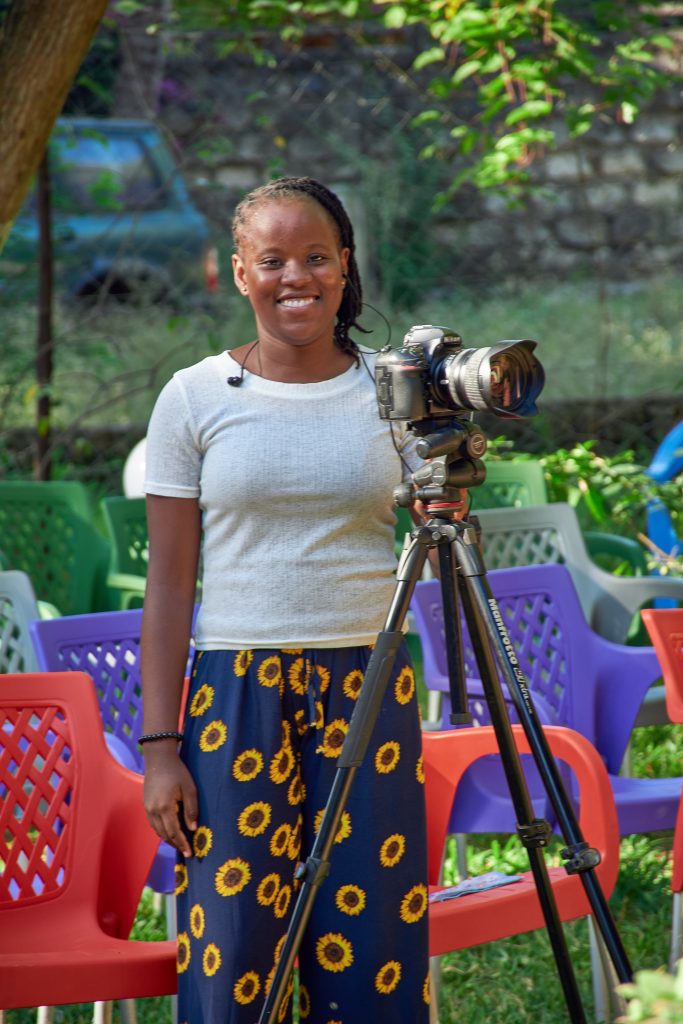It is September, and world leaders have once again come together for the 78th session of the United Nations General Assembly (UNGA 78) to discuss and address the world’s most pressing issues. The world has become scary in recent years, starting with the contagious Covid-19 pandemic that as of 6th September 2023 had killed about 6.9 million people across the world. We are experiencing longer droughts leading to severe famines that are decimating people, animals and plants. Wildfires, storms, earthquakes and other natural calamities are also now more devastating when they occur. Wars and conflicts, poverty, inequality, data privacy and protection as well as other social issues continue to persist, despite relentless efforts to combat them.
We would have been in a worse position were it not for the UNGA 70 in 2015 that birthed the 17 Sustainable Development Goals (SDGs). World leaders envisioned that by 2030, these 17 goals would address poverty, inequality, protect the planet, foster peace and inclusivity as well as ensure the prosperity and wellbeing of all. These targets gave all of us direction and helped us to consolidate our efforts. The SDGs have certainly made the world a better place by reducing the rates of poverty, illiteracy, inequality and climate change, but we are still a long way from reaching them.

We are only 7 years away from 2030. Everyone is now using such words as “urgent”, “action”, “urgent action” and “accelerate” to describe how we should now behave as far as the SDGs are concerned. As our leaders meet in New York, and in light of the need for speed for the SDGs, we would like to make the following submissions:
1. Invest more in Marketing and Communications, and do it in two ways:
Support nonprofits to access and use marketing and communication services.
We have interacted with many nonprofits – both big and small – who are doing real work with communities, but their stories are never told. Take for example Community Based Organisations – these dedicated groups operate directly within local communities and are led by people who intimately understand the issues their communities face and can deeply articulate these issues. Most of them use models that work, and have many success stories to tell.
Yet, a lot of them are noticeably absent online, lacking a presence on social media and blogs to actively share their brand, work, thoughts/ideas, challenges and accomplishments. As a consequence of this invisibility, they have a hard time fundraising and building communities of supporters who show up for them. We are encouraging more investments in strategic marketing and communications for nonprofits because it has some of the following benefits:
- Increased visibility on digital media empowers nonprofits to raise funds more easily so that they keep pursuing their missions.
- Because they are visible, donors will have an easier time noticing and finding them.
- It allows organisations to build trust between current and potential funders, partners and people, because they are constantly seeing what the organisation is doing.
- It helps an organisation to build a strong community of supporters who show up when the organisation needs them, eg, when there’s need for volunteering or a petition to be signed, and,
- When organisations are seeing each other, they can be able to borrow ideas and exchange knowledge. This creates an avenue for engagement and even collaboration between them. As a result, they become more effective in their interventions, potentially saving costs and achieving better outcomes.
Support organisations that do digital campaigns to drive awareness, cause action and inspire behaviour/attitude change.
For profit entities continue to successfully use marketing and communications to raise the awareness of their brands, instil brand loyalty, increase sales and even “change consumer behaviours”. At the core of all these initiatives are people – the same people who nonprofits engage. We submit that if advertising can be used to change consumer behaviour over time, then it can also be used to change people’s behaviours over time.
There is a branch of marketing called Social Marketing. It combines ideas from traditional marketing and social sciences to develop activities aimed at changing or maintaining people’s behaviour for the benefit of individuals and society as a whole. A big part of this is using digital media such as social media to run campaigns.
In the 7 years ahead, we hope that more conversations and investments can be made to support social marketing initiatives. Nonprofits’ communication does not have to be serious – it can also be fun, exciting, informative and attitude shifting.
This is how marketing techniques can be used for social change
2. Invest more in Empowering Rural Creatives to create more and better.
Creatives are usually at the heart of many movements or social changes. They shape conversations. However, not all creatives are given the chance to do this. The contributions and perspectives of rural creatives tend to get lost in statistical assumptions and generalisations. For example, when experts talk of “the creative economy in Kenya,” they are usually talking about the big cities such as Nairobi, Kisumu, Nakuru and Mombasa, and in this they think they are representing even rural towns.
As we talk about leaving no one behind, let us remember rural creatives. They too are part of the orange economy. They too deserve to enjoy the fruits of it just like their counterparts in urban places. They are important stakeholders in development work because they live in the communities where interventions for social change are happening, and they experience the issues. No other people can articulate these issues better than they can. Whenever there’s a campaign or an initiative for behaviour change, they know best how to connect with their communities because not only are they familiar, but also they have the language needed. We hope to see more investment going into building their capacities to create more, create better and make money.
The Sustainable Development Goals will be achieved when we embrace new ideas, no matter how crazy they sound. We must work with people who are on the ground, in the communities where we seek to influence change, and we must empower these people to do this work.


